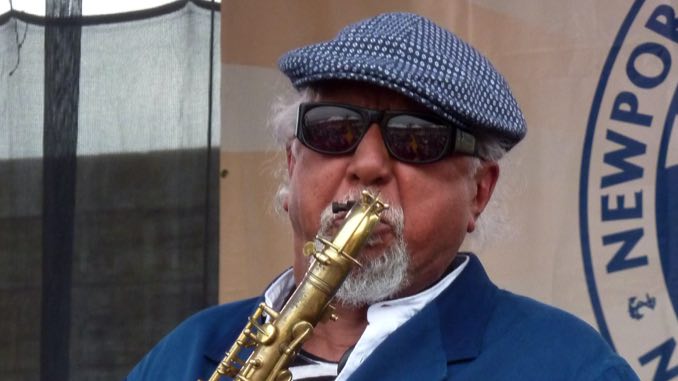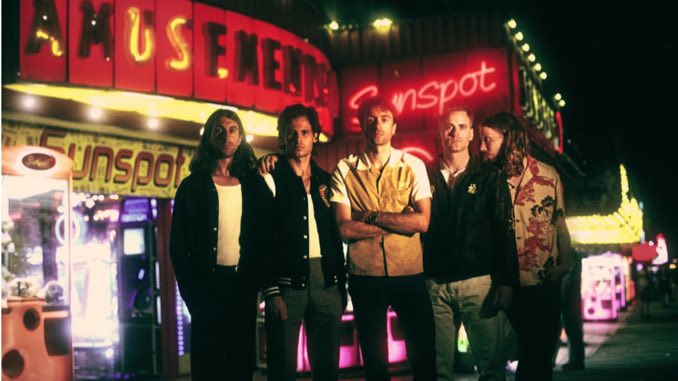If you ask pop-music fans—or even pop musicians—about jazz, most of them will say, “Yeah, I like jazz—Miles Davis, John Coltrane, they’re the best.” If they’re especially conservative, they’ll mention Dave Brubeck and Oscar Peterson; if they’re a bit adventuresome, they’ll mention Ornette Coleman or Sun Ra.
But when they mention these names, they’re implying that jazz peaked as an art form in the late ‘50s and early ‘60s. They’re suggesting that once The Beatles came to America, the cultural zeitgeist shifted from jazz to rock, never to return. They’re assuming that everything that’s happened in the half-century since is a mere rehashing of the glory days.
They’re wrong. Like any other genre, creativity and innovation waxes and wanes in jazz, moves from the margins to the center and back again. But there’s never been a year without terrific new jazz albums being released, even if those records were released on tiny labels without much fanfare. Part of the problem is that jazz critics, publications and radio shows have become so segregated from their pop/rock equivalents that it’s hard for fans on one side of the divide to find out anything about the other.
As a result, many music lovers are unaware that we’re in the midst of another golden era of jazz. The proof is in three recent albums that are as good as any recordings we’re likely to get in any genre this year: Charles Lloyd & The Marvels’ Tone Poem, the Vijay Iyer Trio’s Uneasy, and Joe Lovano & Dave Douglas’ Soundprints’ Other Worlds.
This jazz renaissance has blossomed because most of the genre’s most gifted artists have rejected both the neo-liberal hyper-traditionalists and Bolshevik hyper-experimentalists. This has freed them to embrace both melody and dissonance, both history and innovation, both great chops and tremendous feeling. Call them the jazz progressives, seeking to build coalitions rather than divides, more eager to improve the average citizen’s standard of listening than to maintain musicological purity.
Gone is the snobbishness toward other genres, an attitude that has done much to isolate jazz from the popular music on which it once fed. Nor has that arrogance been replaced by pandering. This movement is not playing the instrumental R&B of Kamasi Washington, nor the instrumental pop of Chris Botti. These jazz progressives are taking the raw materials of the best popular music and transforming it through syncopation, reharmonization and improvisation into something as challenging as it is pleasurable.
The movement’s leading figure is Lloyd. This 83-year-old tenor saxophonist has a long history that includes playing with Howlin’ Wolf in his native Memphis, hiring the little-known Keith Jarrett and Jack DeJohnette for his most famous quartet, releasing one of the best-selling jazz albums of the ‘60s, collaborating with The Beach Boys and Lucinda Williams, and resurrecting his career after a long absence via collaborations with Jason Moran, Brad Mehldau and more.
But that history has never become a weight on his shoulders. As a new documentary film about his pandemic retreat into the California mountains demonstrates, Lloyd cultivates what he calls “beginner’s mind.” Knowledge is valuable, he acknowledges, but it should never prevent one from approaching each composition, each performance with the curiosity and wonder of a child.
That movie, Love, Longing and Loss, directed by his wife Dorothy Darr, documents how he puts that philosophy into practice as he tries to develop new compositions on saxophone, flute, piano and tarogato (a Hungarian woodwind). We watch him tramping through the steep slopes of Santa Barbara above the Pacific and padding across the stone floors of his home, singing and playing melodies with a joyful seeking of surprise. The film, commissioned by Berlin’s Pierre Boulez Saal, can be streamed for free through June 11 via this link.
Lloyd’s emphasis on the sensuality and emotion of melody as the basis for improvisation and development has served him well during his long career. It enables the triumph of his latest studio recording. Tone Poem is his third album with The Marvels, the same band that supported his 2018 collaboration with Lucinda Williams, Vanished Garden.
Joining Lloyd are drummer Eric Harland, bassist Reuben Rogers, guitarist Bill Frisell and steel guitarist Greg Leisz. All four are superb musicians, but Frisell and Leisz have often played outside the jazz sphere with the likes of Joni Mitchell, Elvis Costello, Bonnie Raitt, Paul Simon and Dave Alvin. Even though Tone Poem is an all-instrumental recording, that experience with singers helps Lloyd achieve the singing tone and storytelling motion he’s after.
The album contains songs from Canada’s Leonard Cohen and Cuba’s Belo de Nieve, and even though the words are implied rather than voiced, the listener still gets the sensation of hearing a confessor divulging hopes and secrets. It’s the same chemistry that occurs when you hear a vocalist singing in a language you don’t understand: You don’t get the particulars, but you do get a strong sense of the character and feeling behind the vocals. On Tone Poem, the same thing happens with all five instrumental “voices.”
In vocal song, the storytelling is advanced by adding new dialogue and incident to each verse, even as the music stays the same. In instrumental “song,” the narrative moves forward by adding new melodic and harmonic variations to each repetition of the central theme. On Cohen’s “Anthem,” Frisell’s guitar intro quotes Hank Williams’ “I’m So Lonesome I Could Cry” with a kind, older-but-wiser stoicism that bleeds into Cohen’s live-and-let-live philosophy. Lloyd’s tenor sax enters 70 seconds into the song and lifts the confession to a higher, more poignant pitch.
On Ornette Coleman’s “Ramblin’,” it’s Harland’s snare drum that captures the narrator’s restlessness and Leisz’s pedal steel that releases that cooped-up feeling with a train-whistle blast and a greased ride down the railroad tracks. Soon Lloyd’s sax is babbling with joy as the landscape rushes past the window.
On his own composition, “Dismal Swamp,” Lloyd switches to alto flute, quotes Donovan’s “Sunshine Superman,” and dances like a sprite among the gloomy cypress trees and Spanish moss of Rogers’ ominous bass lines. On the title track, Lloyd’s sax darts this way and that, as if exploring every possibility of the journey while Harland’s shuffle beat keeps urging the leader forward.
The album’s highlight is a 10-minute version of “Monk’s Mood” by Thelonious Monk, the genius who could turn the quirkiest musical phrase into a hook. Lloyd begins this ballad by crooning through his sax with seductive romanticism. Frisell’s guitar takes on the role of the wooed lover, now flirtatious, now withholding, now swooning. Each reaction encourages Lloyd to up his game with newer, more persuasive overtures.
There are no horns or guitars on Vijay Iyer’s Uneasy, just the elemental triangle of the jazz piano trio. Iyer, a South Asian-American keyboardist, is joined by Linda May Han Oh, a Chinese-Australian bassist, and Tyshawn Sorey, an African-American drummer. These demographics demonstrate how this African-American music has spread across the globe into every community, drawing from influences far beyond New Orleans and Chicago to reinvigorate itself.
Iyer wrote or co-wrote eight of the 10 pieces, but Oh and Sorey, both composers and bandleaders themselves, are among the most melodic musicians on their instruments and allow this session to become a true collaboration of equals. The bass and drums are boosted in the mix, allowing us to hear how the higher-pitched bass strings, the toms and cymbals restate the theme and chord changes. They not only respond to Iyer’s ideas, but also force him to respond to theirs.
The result is a genuine give-and-take, a three-way conversation that’s exciting to eavesdrop on. The album’s title is a clue to the music’s unsettling tensions: harmonic progressions that never resolve as expected, minor keys that bump up against major keys, grooves that get tied into new knots before we can relax into them. The music isn’t angry or grating, but nor is it comfortable or reassuring. It’s “uneasy,” as the title suggests, and that keeps the listener on the edge of their seat, anxious to hear what’s going to happen next. That kind of suspense makes for the best storytelling.
You can hear this most clearly on the nine-minute title track. Iyer’s opening theme seems to promise a satisfying tune, but it moves in intervals that continually undershoot or overshoot the expected note, knocking us off balance. We think we know where the melody is going now, but again we’re surprised by the note choices. Soon Oh and Sorey are playing the same game, leading us on and tripping us up.
Oh is also the bassist on Joe Lovano & Dave Douglas’s Soundprints’ Other Worlds, a quintet session that includes pianist Lawrence Fields and drummer Joey Baron. Lovano and Baron have often recorded with Frisell and have a similar song-centric approach to jazz improvisation. The album’s title and cover illustration (of a giant, turquoise robot stomping his way across Mars) suggest a sci-fi concept for the record. The band, however, eschews synths and other space-age sound effects and tries to suggest interplanetary travel with traditional acoustic instruments.
That they succeed is due to the rhythm section’s ability to deliver momentum that is more aerial than terrestrial. The music keeps moving forward with force, but there always seems to be air underneath—as if the music were able to glide until it needed another shot of propulsion. This is the influence of Lovano’s longtime collaborator, the late drummer Paul Motian, the grandmaster of rhythmic implication.
This openness in the sound evokes the empty expanses of space, where the solitude can prompt internal exploration as well as external. The arrangements often break the quintet into an unaccompanied duo or trio for more intimate dialogues. When the full roster reconvenes, the ideas from those private conversations are fleshed out into a collective consensus.
Tenor saxophonist Lovano wrote five of the album’s 10 tracks, and trumpeter Douglas wrote the other five. They each take long, storytelling solos, but they always eventually return to simultaneous playing—sometimes unified, sometimes overlapping, sometimes point-and-counterpoint. As in any good sci-fi movie about a long space flight, there are arguments, epiphanies and crises, even as the ship is forever moving forward.
These are my three favorite jazz albums of the year so far, but a golden jazz era like the current one includes a lot of rewarding music. I can also recommend these: Joe Lovano & Trio Tapestry’s Garden of Expression, James Brandon Lewis & Red Lily Quintet’s Jesup Wagon, Arturo O’Farrill & The Afro Latin Jazz Orchestra’s Virtual Birdland, Dahveed Behroozi’s Echos, The Hank Roberts Sextet’s Science of Love, Michael Thomas’ Natural Habitat, Pino Palladino & Blake Mills’ Notes with Attachments and Jennifer Wharton’s Bonegasm’s Not a Novelty.




